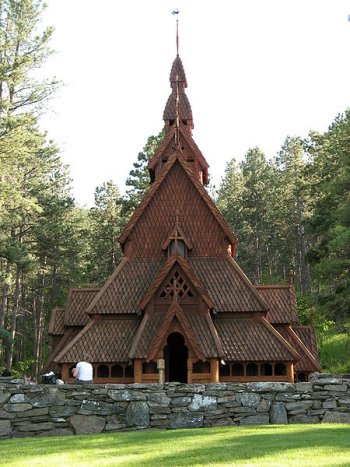Rapid City is the second largest city in Soouth Dakota. Located on the southwestern part of the state, it serves as county seat of Pennington County. It covers 44.7 sq mi (115.7 sq km) and has a population of 120,000 people (2011 estimate).
Rapid City is located on the eastern slope of the Black Hills mountain range, about 3,202 ft (976 m) above sea level, in the shadow of 7,242 ft (2,207 m) Harney Peak, the tallest mountain east of the Rocky Mountains.
 Chapel in the Hills, Rapid City, South Dakota
Chapel in the Hills, Rapid City, South DakotaSource: https://commons.wikimedia.org/wiki/File:ChapelInTheHills3.jpg
Author: Jake DeGroot

Rapid City experiences a steppe climate, with cold, dry winters and hot, dry summers. Hottest months are July and August, when the average high temperature touches 85.5°F (29.7°C). In January the average low temperature drops to 11.3°F (-11.5°C). Total annual precipitation stnas at only 16.64 in (422.7 mm).
As with the many towns and cities in southwestern South Dakota, Rapid City was the result of the gold discovery made by the Custer Expedition of 1874. It brought an influx of gold prospectors to the Black Hills region. The city was laid out by John Brennan and Samuel Scott in 1876, and named after Rapid Creek which flows through it.
Since the late 1890s Rapid City has promoted itself as a tourist destination, banking on the natural beauty of the Black Hills region. Completion of the Mount Rushmore National Memorial helped to bring an increase in tourists to the area. Today the city serves as gateway for the tourism destinations in the area.
Visiting Rapid City
The Rapid City Regional Airport (RAP) gets flights from Chicago, Dallas/Fort Worth, Denver, Las Vegas, Minneapolis/St Pual, Phoenix and Salt Lake City, among others.Places of Interest in Rapid City
- Mount Rushmore National Memorial
One of the most famous sculptures in the United States, located near Keysone, to the southwest of Rapid City. - Reptile Garden
Park with one of the best collection of reptiles in the country, including Gus, the resident 14-foot-long American alligator. - The Journey Museum
Museum that tells the history of the Black Hills area, specifically the history of the Native Americans, as well as the local geology, paleontology and archaeology.
 Latest updates on Penang Travel Tips
Latest updates on Penang Travel Tips

Copyright © 2003-2025 Timothy Tye. All Rights Reserved.

 Go Back
Go Back